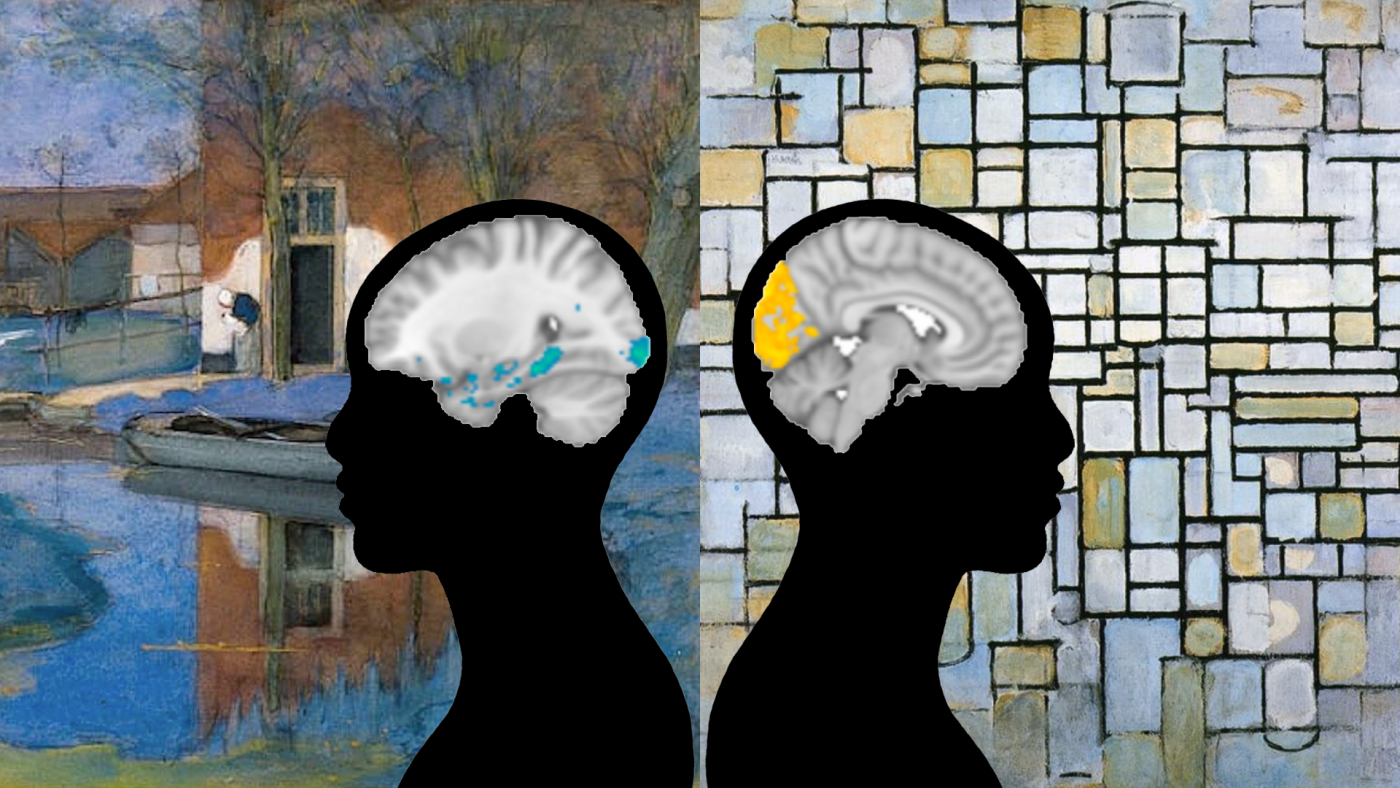2025-04-07 コロンビア大学

Brain scans show areas that tend to activate when viewing art that is representational (left) vs abstract (right). (Credit: Piet Mondrian / Celia Durkin / Shohamy lab).
<関連情報>
- https://zuckermaninstitute.columbia.edu/art-brain-beholder
- https://www.pnas.org/doi/10.1073/pnas.2413871122
ビホルダーズ・シェア 主観的経験の個人差を研究するために芸術と神経科学を橋渡しする The Beholder’s Share: Bridging art and neuroscience to study individual differences in subjective experience
Celia Durkin, Marc Apicella, Christopher Baldassano, +1, and Daphna Shohamy
Proceedings of the National Academy of Sciences Published:April 7, 2025
DOI:https://doi.org/10.1073/pnas.2413871122
Significance
The Beholder’s Share in art history posits that a work of art is completed by the viewer, who infuses it with personal meaning. Here, we present an empirical examination of a key assumption of the Beholder’s Share: that abstract art elicits more subjective interpretation than representational art due to its inherent ambiguity. To investigate this, we quantified interindividual differences in brain activity in response to abstract or representational paintings. Our findings revealed more person-specific responses to abstract paintings, indicating that individuals contribute more personal associations to abstract art than to representational art. These unique patterns were observed in brain regions associated with internally-oriented cognition rather than areas involved in visual perception, providing empirical evidence supporting the Beholder’s Share.
Abstract
Our experience of the world is inherently subjective, shaped by individual history, knowledge, and perspective. Art offers a framework within which this subjectivity is practiced and promoted, inviting viewers to engage in interpretation. According to art theory, different forms of art—ranging from the representational to the abstract—challenge these interpretive processes in different ways. Yet, much remains unknown about how art is subjectively interpreted. In this study, we sought to elucidate the neural and cognitive mechanisms that underlie the subjective interpretation of art. Using brain imaging and written descriptions, we quantified individual variability in responses to paintings by the same artists, contrasting figurative and abstract paintings. Our findings revealed that abstract art elicited greater interindividual variability in activity within higher-order, associative brain areas, particularly those comprising the default-mode network. By contrast, no such differences were found in early visual areas, suggesting that subjective variability arises from higher cognitive processes rather than differences in sensory processing. These findings provide insight into how the brain engages with and perceives different forms of art and imbues it with subjective interpretation.

